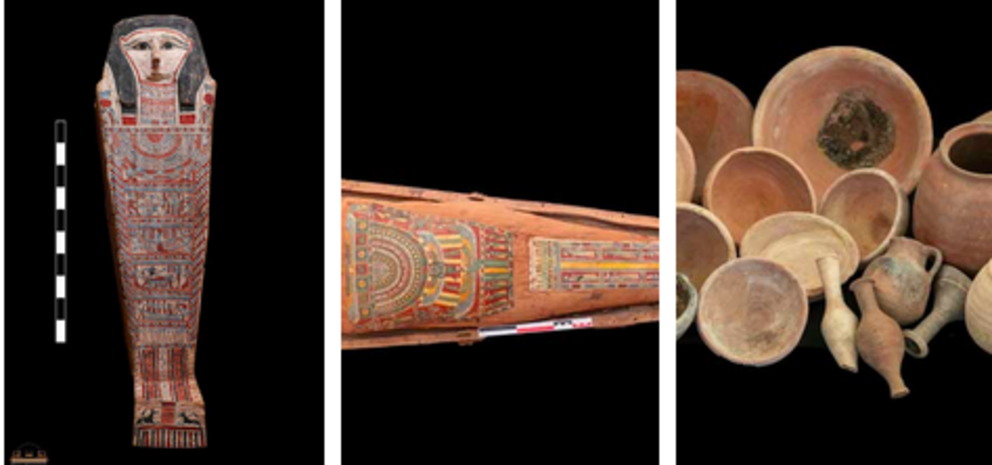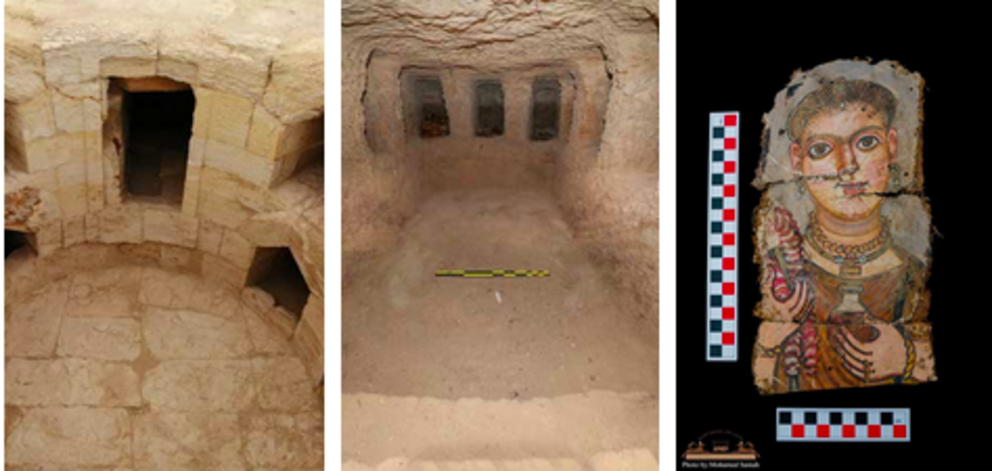Egypt’s Fayum oasis yields funerary structure and portraits
The Egyptian archaeological mission at the Garza archaeological site in Egypt’s Fayoum city uncovered on Thursday a large funerary building/structure dating back to the Ptolemaic and Roman eras.
This is the 10th excavation season for this mission, which began excavations in 2016.

The Garza village, previously known as Philadelphia village, was established in the third century BCE as a central village within the agricultural reclamation project implemented by King Ptolemy II in the Fayoum region.
Its aim was to secure food resources for the Egyptian kingdom and it had both Greek and Egyptian inhabitants.
The floor of the funerary building consists of coloured lime mortar and is decorated with differently coloured tiles. In addition, the remains of four columns (found inside a column shed) were discovered in the vicinity of the building, said head of the Central Department of Egyptian Antiquities in Central Egypt Adel Okasha.
Basem Jihad, supervisor of the central training unit and head of the mission, added that a number of coffins in both ancient Egyptian and ancient Greek styles were also found.
He added that this is characteristic of this site, and that many previous discoveries reflect this combination of architecture and artefacts from both civilisations.
Furthermore, the new discovery displays the variety and diversity in the quality of embalming extant during the Ptolemaic and Roman dynasties.
This variety, which ranges from high-quality embalming to simple burials, indicates the standard of living of the dead, said Secretary General of the Supreme Council of Antiquities Moustafa Waziri.
In addition, a number of portraits, popularly known as Fayoum portraits, were also uncovered by the mission.
Okasha asserted that these portraits are the first to be discovered since English archaeologist Flinders Petrie unearthed a group of them back in 1907.
Therefore, the recently discovered portraits are one of the most precious archaeological findings this season.
A rare terracotta statue of the goddess Isis Aphrodite was discovered in one of the wooden coffins, as well as a cache of papyrus documents.
The papyrus documents were inscribed in both Demotic and Greek script (both indicating the ancient Egyptian language), and reflect the social and religious conditions of the inhabitants, said Waziri.



